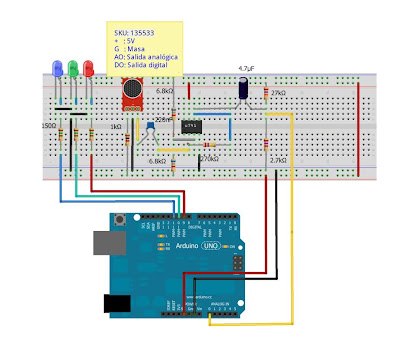<< Arduino light organ (II)- The circuit
WARNING: In this part is used mains voltage, which can carry risks. If you do not have enough experience or not you think trained, best uses few leds low voltage and evitate a scare. The author is not responsible for any damage caused by not taking proper security measures.
For the power stage I used triacs of type BT137 controlled by optocouplers MOC3041. Depending on the power you need to control, you can change the type of TRIAC less powerful one (or more ...).
The optocouplers MOC3041 internally contain a control circuit for triggering the zero crossing, the triac is always close to zero voltage pass avoiding interference.
You can use other types of optocouplers respecting the circuit recommended by the manufacturer.
The scheme:
And this appearance when mounted (in my case the stage is 4 channels)
Note that a box is mounted on suitably isolated. The heatsinks are Triacs for high continuous loads (in this case support 8A, allowing about 1500W per channel).
The result:
Have fun ....








